Sorry, but the answer provided by imochoa is not fully correct.
The offset does not include all 26 periodic neighbor boxes but only 9:
import itertools
grid_size = 1.0
offsets = itertools.combinations_with_replacement([grid_size,0,-grid_size],r=3)
[(x_offset, y_offset, z_offset) for x_offset,y_offset, z_offset in offsets]
>>>[(1.0, 1.0, 1.0),
(1.0, 1.0, 0),
(1.0, 1.0, -1.0),
(1.0, 0, 0),
(1.0, 0, -1.0),
(1.0, -1.0, -1.0),
(0, 0, 0),
(0, 0, -1.0),
(0, -1.0, -1.0),
(-1.0, -1.0, -1.0)]
This is missing offsets. e.g: (1.0,0.0,1.0).
I suggest the following approach to create the offsets:
off_x,off_y,off_z= np.meshgrid([-1,0,1],[-1,0,1],[-1,0,1],indexing='ij')
offs=np.array([off_x.flatten(),off_y.flatten(),off_z.flatten()]).T;
centers_fix = [(particle['x']+x_offset, particle['y']+y_offset,particle['z']+z_offset) for x_offset,y_offset, z_offset in offs]
I_fix=np.logical_or.reduce([(X-c_x)**2 + (Y-c_y)**2 + (Z-c_z)**2 < particle['r']**2 for c_x, c_y, c_z in centers_fix])
Comparison to the previous answer:
import numpy as np
import itertools
grid_size = 1.0
x_ = np.linspace(0,1,100)
y_ = np.linspace(0,1,100)
z_ = np.linspace(0,1,100)
X,Y,Z = np.meshgrid(x_,y_,z_,indexing='ij')
particle = {'r':0.25, 'x':0.9, 'y':0.9,'z':0.9}
offsets = itertools.combinations_with_replacement([grid_size,0,-grid_size],r=3)
centers = [(particle['x']+x_offset, particle['y']+y_offset,particle['z']+z_offset) for x_offset,y_offset, z_offset in offsets]
I=np.logical_or.reduce([(X-c_x)**2 + (Y-c_y)**2 + (Z-c_z)**2 < particle['r']**2 for c_x, c_y, c_z in centers])
off_x,off_y,off_z= np.meshgrid([-1,0,1],[-1,0,1],[-1,0,1],indexing='ij')
offs=np.array([off_x.flatten(),off_y.flatten(),off_z.flatten()]).T;
centers_fix = [(particle['x']+x_offset, particle['y']+y_offset,particle['z']+z_offset) for x_offset,y_offset, z_offset in offs]
I_fix=np.logical_or.reduce([(X-c_x)**2 + (Y-c_y)**2 + (Z-c_z)**2 < particle['r']**2 for c_x, c_y, c_z in centers_fix])
from matplotlib import pyplot as plt
fig, ax = plt.subplots(3, 2,figsize=[10,10])
ax[0, 0].imshow(I[int(particle['x']*100),:,:], origin='lower')
ax[0, 0].set_title('I x')
ax[1, 0].imshow(I[:,int(particle['y']*100),:], origin='lower')
ax[1, 0].set_title('I y')
ax[2, 0].imshow(I[:,:,int(particle['z']*100)], origin='lower')
ax[2, 0].set_title('I z')
ax[0, 1].imshow(I_fix[int(particle['x']*100),:,:], origin='lower')
ax[0, 1].set_title('I_fix x')
ax[1, 1].imshow(I_fix[:,int(particle['y']*100),:], origin='lower')
ax[1, 1].set_title('I_fix y')
ax[2, 1].imshow(I_fix[:,:,int(particle['z']*100)], origin='lower')
ax[2, 1].set_title('I_fix z')
Comparision image
3D Image of original answer
3D Image of the suggested fix

